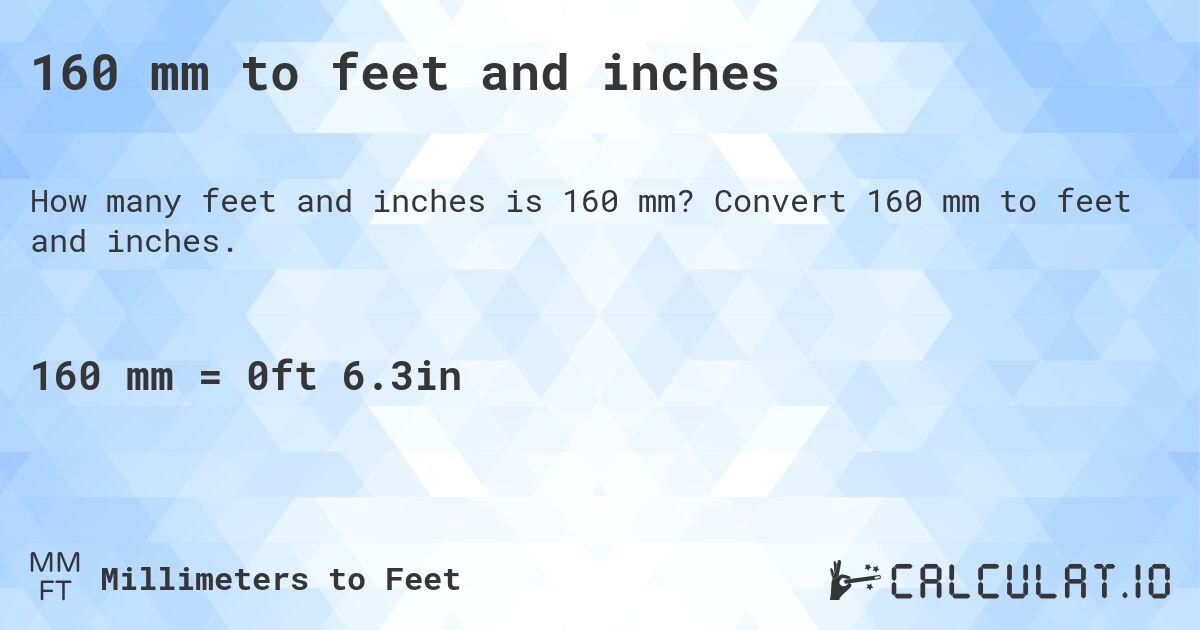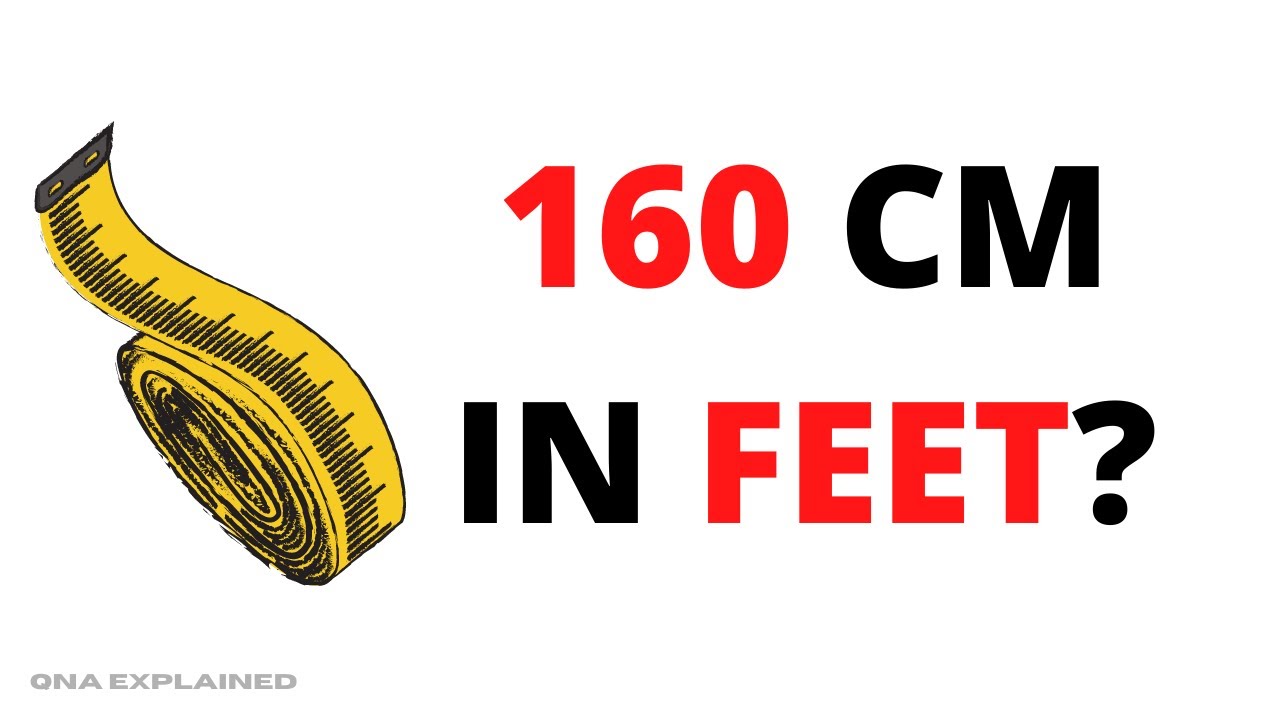Welcome to our blog post about converting 160 inches to feet! Whether you’re a DIY enthusiast, a math whiz, or just curious about measurements, this article is here to help. We’ll break down the basics of measurement conversion and guide you through converting inches to feet. So grab your ruler, and let’s start unraveling this mathematical mystery! By the end of this post, you’ll clearly understand how long 160 inches is in terms of feet. So, get ready to measure up and dive into the world of conversions!
Understanding the Basics of Measurement Conversion
Measurement conversion is a fundamental skill in various aspects of life. Whether calculating distances, working on home improvement projects, or even trying to figure out the length of something, understanding how to convert measurements is crucial.
At its core, measurement conversion involves changing one unit of measurement into another. In this case, we’ll be focusing on converting inches to feet. But before we dive into the specifics of this particular conversion, let’s take a moment to understand the basic units involved.
An inch is a commonly used unit for measuring small lengths. It is equivalent to 1/12th of a foot or approximately 2.54 centimeters. On the other hand, a foot is slightly longer and measures about 30 centimeters or 12 inches.
Converting inches to feet requires dividing the given length by 12 since twelve inches are in one foot. This process allows us to express smaller measurements in terms of larger ones more easily.
Understanding measurement conversions helps us make sense of different units and communicate effectively when discussing sizes and distances with others.
So now that we’ve covered the basics, let’s move on and explore some practical uses for converting inches to feet!
What is an Inch and a Foot?
Measurement conversions can sometimes be confusing, especially when understanding the difference between inches and feet. Let’s break it down!
An inch is a unit of length in the imperial system of measurement. It is commonly used in the United States for everyday measurements such as the size of a TV screen or a person’s height. In simpler terms, an inch is approximately equal to the width of your thumb.
On the other hand, a foot is also a unit of length but is more significant than an inch. It consists of 12 inches or about one-third of a yard. To put it into perspective, imagine your foot – that’s where its name originates! A typical adult foot measures around one foot in length.
Now that we have established what each measurement means individually, let’s move on to converting them!
The Process of Converting Inches to Feet

When it comes to measurement conversions, understanding how to convert inches to feet is an essential skill that can be useful in various situations. Whether you’re working on a DIY project at home or need to convert measurements for professional purposes, knowing how many feet are in a given number of inches can save you time and effort.
So, how exactly do you convert inches to feet? The process is quite simple. Since there are 12 inches in one foot, you only have to divide the number of inches by 12. For example, if you have 160 inches and want to know how many feet that is, divide 160 by 12.
By performing this calculation, we find that 160 inches equals approximately 13.33 feet. It’s important to note that when converting from smaller units (like inches) into larger units (like feet), the resulting value will be smaller because each team represents a larger quantity.
Knowing how to convert between different units of measurement not only helps with practical tasks but also allows for better comprehension when reading measurements on blueprints or following instructions for various projects.
Converting inches to feet involves dividing the number of inches by 12 since twelve inches are in one foot. This straightforward conversion method can prove invaluable when tackling everyday tasks or engaging in more complex projects where accurate measurements are crucial.
Common Uses for the Inch-to-Foot Conversion
The inch-to-foot conversion is a handy tool that can be used in various situations. One everyday use is in construction and home improvement projects. When measuring materials such as wood or pipe, it’s essential to have accurate measurements in feet rather than inches. This allows for better planning and ensures that everything fits appropriately.
Another everyday use for this conversion is in the fashion industry. Clothing sizes are often listed in inches, but many people prefer to think of their size in terms of feet. Converting from inches to feet can help individuals understand how they would measure up on a height chart or when choosing the correct length of pants.
In addition, the inch-to-foot conversion is also used frequently in sports and athletics. For example, track and field events often require athletes to jump or throw objects a certain distance measured in feet rather than inches. Athletes can easily visualize and understand these distances by converting from inches to feet.
This conversion comes into play when working with architectural blueprints or floor plans. Dimensions are typically given in both inches and feet, so being able to convert between the two is essential for accurately interpreting these drawings.
The inch-to-footinch-to-foot conversion has numerous practical uses across various industries, from construction and fashion to sports and architecture. Being able to convert measurements quickly helps ensure accuracy and efficiency in everyday tasks requiring measurement conversions.
Practical Examples of Using 160 Inches in Feet
When it comes to measurements, understanding the conversion between inches and feet is essential. Let’s look at some practical examples of how knowing this conversion can be helpful.
Imagine you’re redecorating your living room and need to hang curtains. The length of the window is 160 inches. By converting this measurement to feet, you’ll know exactly how long your curtains need. In this case, 160 inches would equal 13.33 feet (rounded to two decimal places).
Another example could be if you’re working on a DIY project that requires precise measurements. Let’s say you’re building a bookshelf and need each shelf to be around 40 inches long. Converting this measurement to feet, you’ll find that each frame should be approximately 3.33 feet long.
Knowing the inch-to-foot conversion can be helpful when determining plant spacing or installing sprinklers evenly throughout your lawn if gardening is more your thing. For instance, if you want each plant spaced about six inches apart, converting that measurement gives you an idea of spacing them half a foot away.
These are just a few practical examples where understanding the conversion from inches to feet can save time and ensure accurate measurements for various projects or tasks.
Remember, accuracy is critical when converting measurements! Use tools like calculators or online converters for precise results every time.
Tips for Accurate Measurement Conversion
Converting inches to feet may seem simple, but ensuring accuracy in your calculations is essential. Here are a few tips to help you achieve precise measurement conversion.
1. Double-check your math: When performing any calculation, it’s always a good idea to double-check your work. One tiny error can lead to significant discrepancies in the final result.
2. Use a reliable conversion chart: Utilize a reliable conversion chart or online converter tool to assist you in converting inches to feet. This will provide you with accurate measurements and save you time.
3. Understand rounding rules: Depending on the specific requirements of your project or task, it’s crucial to understand when and how rounding should be applied during the conversion process.
4. Take note of decimal places: Pay attention to decimal places when working with measurements that include fractions of an inch. Round appropriately based on the desired level of precision.
5. Be aware of unit conversions: Make sure you convert between compatible units (inches and feet) and remember to correctly mix different measurements (such as inches and centimeters).
By following these tips, you can confidently convert 160 inches into its equivalent length in feet accurately and efficiently!
Conclusion
Understanding measurement conversions is essential in many aspects of our daily lives. Converting inches to feet, such as 160 inch to feet, allows us better to understand the length and size of objects or spaces. By grasping the basics of this conversion process, we can easily navigate between these two units of measurement.
In this article, we have explored what an inch and a foot represent regarding measurements. We discussed the process of converting inches to feet using simple math calculations. Additionally, we examined common uses for this conversion and provided practical examples of how long 160 inches in feet can be beneficial.
To ensure accurate measurement conversions, it’s crucial to double-check your calculations and utilize proper tools such as rulers or measuring tapes. Remember that precision matters when dealing with measurements.
So whether you’re trying to determine a person’s height or measure the dimensions of a room during a home renovation project, understanding how many feet are equivalent to 160 inches will be helpful.
Keep practicing your measurement conversions knowledge; soon enough, it will become second nature! So, confidently convert those pesky inches into their corresponding number of feet.
Also Read:MSN Games





